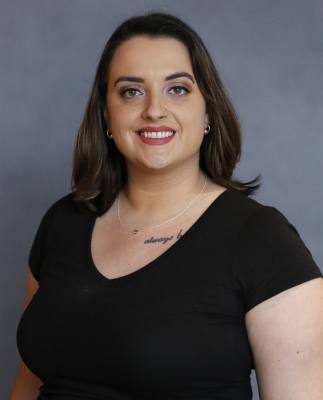Clear Creek ISD administrators are ironing out the details of the district’s reopening, working to find the best solution for educating 42,000 students while abiding by health and safety restrictions amid the coronavirus pandemic.
The district plans to open its doors and welcome students back to campuses Aug. 18, but families not yet comfortable with brick-and-mortar education will have the option of sending their kids to school online through the district’s new Clear Connections platform.
Superintendent Greg Smith, who is set to retire in December, will update the CCISD community weekly on the district’s progress. Smith, Director of Guidance and Counseling Dava West and Assistant Superintendent of Elementary Education Holly Hughes detailed the progress made so far and answered questions from parents during a livestream event July 1.
Smith said during the livestream that administrators are doing everything possible to provide quality, rigorous, real-time instruction to students from the teachers they love this fall. New health and safety measures are being developed and will be shared with the CCISD community no later than July 30, he added.
“This is a community endeavor,” he said. “Do your part today so we can be together this fall—I cannot express this enough.”
Here are five major updates to know about the 2020-21 school year in CCISD.
Masks will not be mandated at all times
Smith said during the livestream that he does not yet have an answer as far as the enforcement of face mask usage. Masks must be worn, however, on school buses, in common areas, when large groups of people come together and around any district employees who are immunocompromised or otherwise at risk, Smith added.
“They would not be required just for the heck of it,” he said.
The district will implement a recommendation given by the Safely Reopen CCISD Committee to extend the school day by a few minutes, which would allow for students and staff to properly implement any new health and safety procedures, including hand washing or putting on masks.
Staff wants students back on campus to address mental health concerns
Activity at the district over the summer will be sparse, with summer school going on virtually and conditioning camps paused until mid-July, Smith said. In order to have an in-person summer school, the district would have needed to restrict bus capacity to 17 students and classroom capacity to 11 students, all sitting six feet apart.
“You have to get creative when things get a little dicey, and that’s what we’ve done,” he said.
During a Clear Lake Area Chamber of Commerce luncheon June 24, Smith said the district has served hundreds of thousands of meals to students since March through its drive-thru program. Still, he said, administrators are concerned about the well-being of students.
There has been an increase in students overdosing on drugs or self-harming, which is connected to their loss of in-person time with peers, friends and role models, Smith said during the luncheon. The district has two tip lines, which are typically used to report instances of vaping or cheating. Instead, they have been taking calls from students asking for help as their friends struggle with depression, he said.
“Our counselors are really worried about this,” he said at the luncheon. “We must get our children back in the loving arms of our staff members.”
Clear Connections will be a more authentic remote learning experience
Administrators continually emphasized during the livestream that online learning will not look the same as it did from March to May. The platform is still being designed, but administrators said a principal, counselors and lead teachers, all of whom are separate from the existing district staff, will work with students who choose Clear Connections.
The goal is to give those students the same chance to develop one-on-one relationships with their own teachers rather than having teachers work with classrooms of students and then also teach virtually, West said. Administrators said that for families who opt into Clear Connections, the parents will serve as “learning coaches.”
The platform is not designed for students to be able to complete all their work early in the week and then have extra days off, which is what administrators said many students were doing in the spring. Many components are synchronous, meaning students must be present in real time. A minimum of three school days per week must include synchronous components, West said, with the other two days leaving flexibility and time for independent study.
Students who enroll in Clear Connections must stay with this style of learning for a full grading period. Approximately 25% of course content is offered through another platform, Edgenuity, which the district has used for several years. The courses offered via Edgenuity are more self-directed and self-paced and are not any of the core courses, West said.
Texas Commissioner of Education Mike Morath gave districts, students and families until two weeks before the start of the school year to finalize arrangements, Smith said during the livestream. Parents will therefore have until early August to decide on their children’s mode of instruction, but administrators encouraged families to commit as soon as possible to ensure the appropriate staff can be hired.
The digital divide is being addressed
The district will work with area technology companies to develop rebate programs that will help provide students and families with necessary technology, like laptops, Smith said. Families will also be surveyed about who does and does not have access to the technology at home already.
Hughes said during the livestream that for students engaging in remote learning through Clear Connections, the district aims to provide authentic educational experiences without excessive screen time, especially for younger students.
Clear Connections will be made available for kindergarten through 12th graders. There is no viable substitute for in-person learning with pre-K students, so the district will adjust for its youngest learners accordingly, Hughes said.
There will be a plan for future coronavirus-related closures
In the event of an outbreak on a specific campus, or across the district, officials said there is a temporary solution being developed for a school-to-home model. Hughes said the plan is being finalized.
“Our intention is for learning to continue—and authentic, strong teaching to continue—in every way that we can,” she added.
Teachers would deliver instruction live from their classrooms without students physically present. Lapel microphones and cameras are being purchased to prepare for this situation, officials said.
Smith expressed optimism at the opportunity to reimagine remote education.
“Education can occur anywhere, at any time, at any pace, and we’re trying to respond to that,” Smith said, adding that as the community adapts, “[this could] really be our finest hour.”





